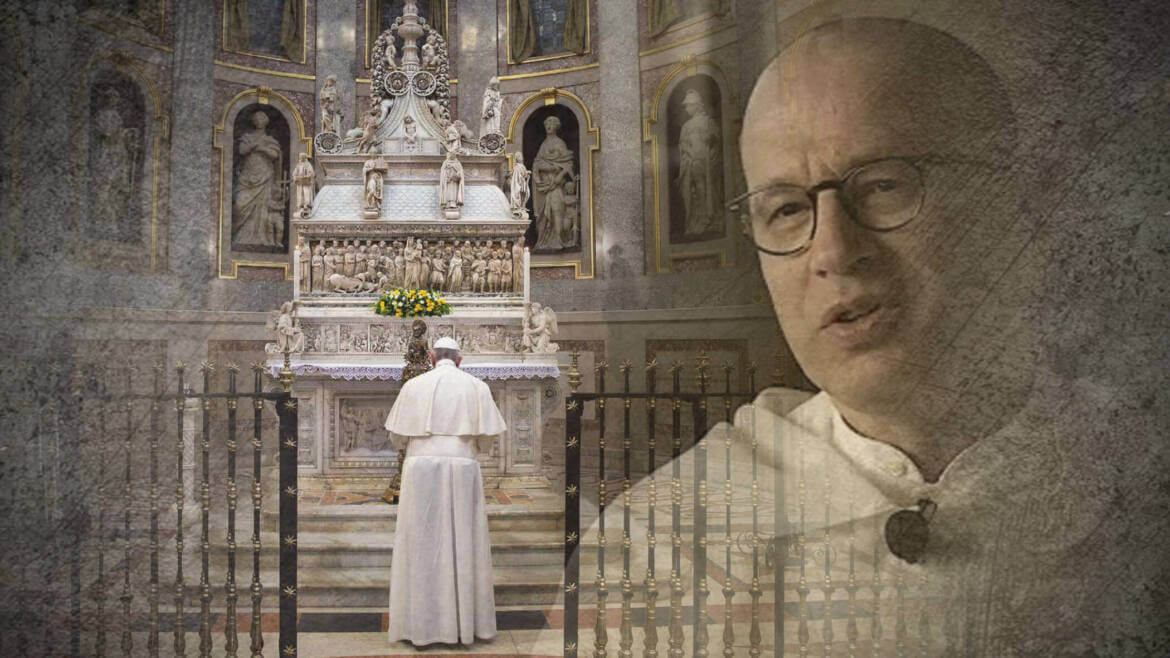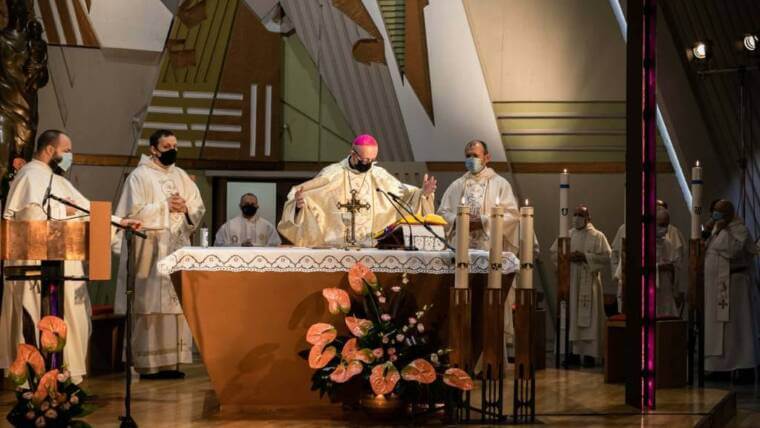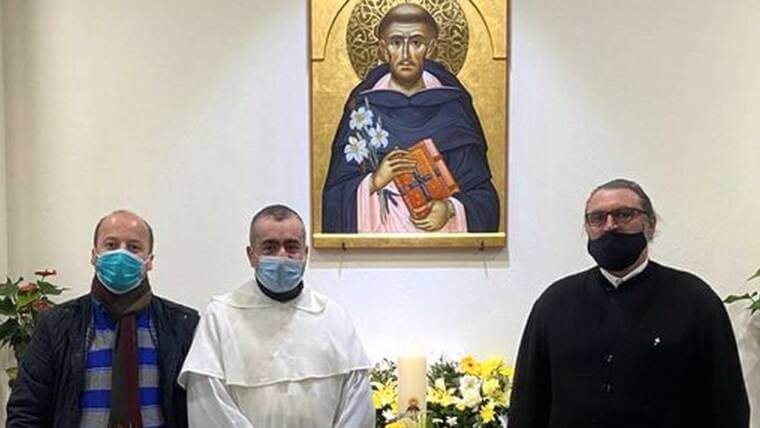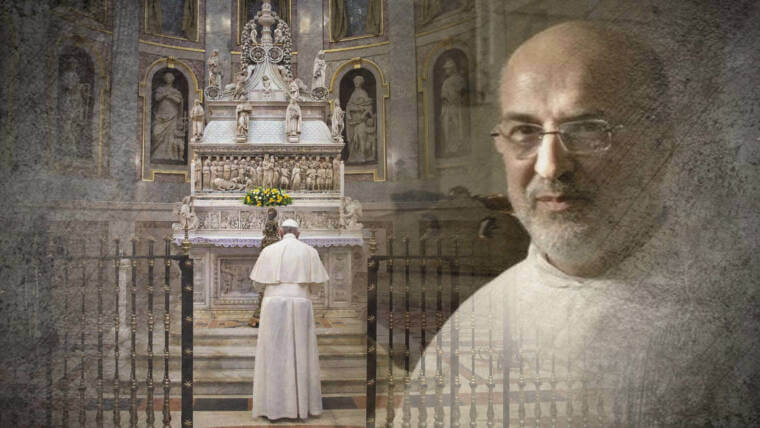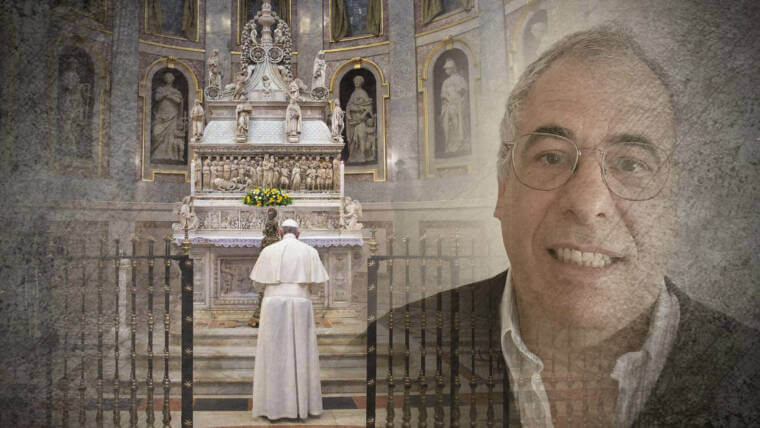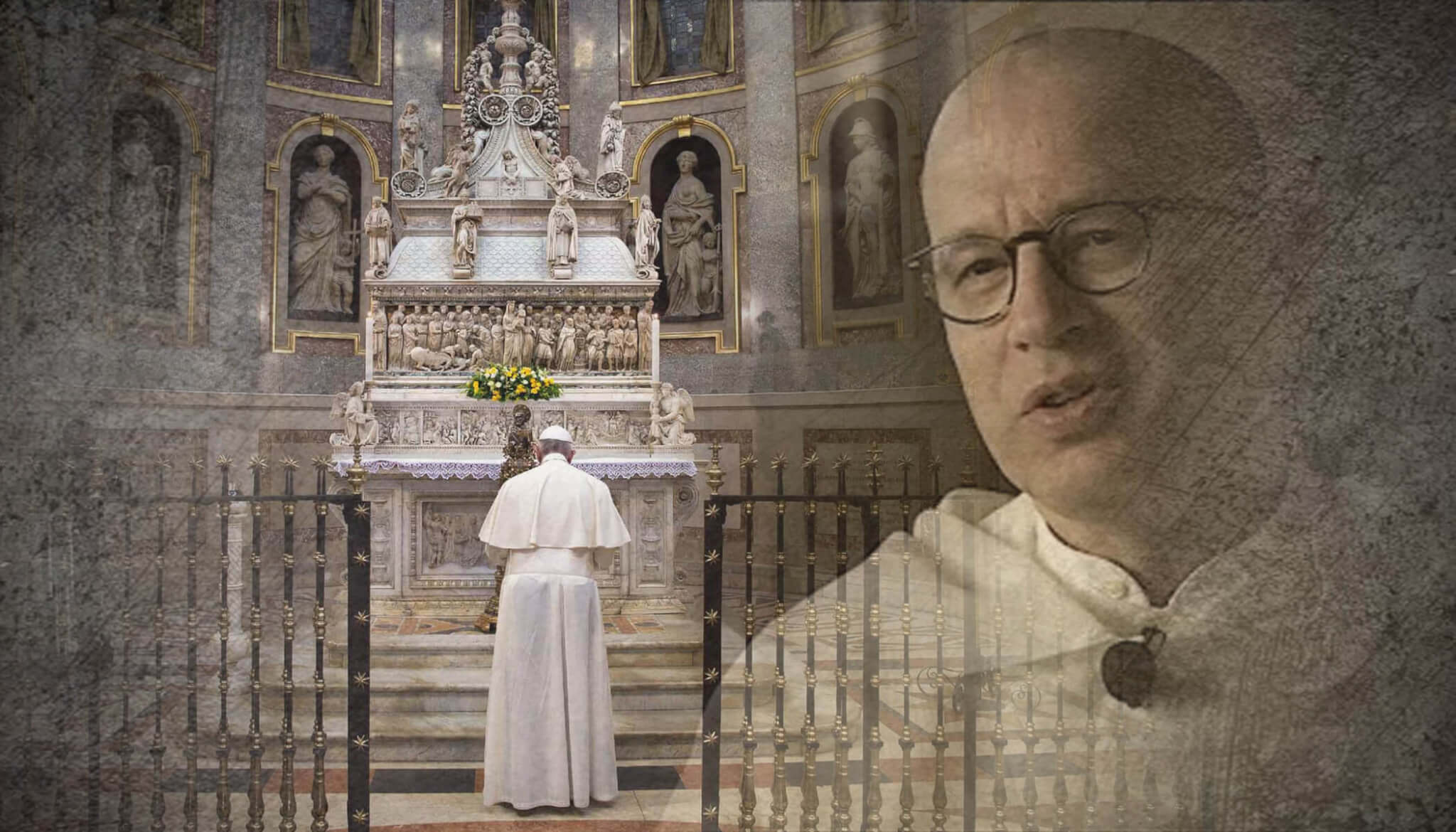
On 6th January this year, the Jubilee of the Eighth Centenary of the death – dies natalis – of St. Dominic of Caleruega (c. 1274-1221), which happened on 6th August 1221 in a humid, sweltering Bologna, was inaugurated throughout the Order of Preachers. With the Apostolic Letter Praedicator gratiae, addressed to the whole Dominican Family all over the world, Pope Francis wanted to recall and honour the figure of the great Saint who, together with Francis of Assisi, not only marked a decisive and original turning point in the history of the Church, but represents, as it did in the past and still does today, a shining example of a life consumed in the service of evangelical charity and the salvation of souls. The Order of Preachers was born of the apostolic heart of this man who, as St. Catherine of Siena so aptly recalls, “took up the Office of the Word” and “most zealous for the salvation of souls […] intent on speaking [with God or about God]”, combining apostolate and contemplation in an admirable balance, “devoted himself totally to the renewal of the Church” (Preface of the Mass for St. Dominic).
Dominic’s holiness, officially recognised by Pope Gregory IX on 14th July 1234 in Rieti, is an eminently apostolic holiness, nourished and sustained by an early dedication to prayer and the study of theology. From the early sources we can draw a profile of his holiness. These texts recount many of his miracles in great detail, but as his successor, Blessed Jordan of Saxony, recalls: “more splendid than the miracles were his sublime character and burning zeal”, namely his charisma, his virtues and his life.
Cardinal Ugolino of Ostia met Francis and Dominic in person and, as Pope Gregory IX (1227-1241), canonised them both. The Bull of canonisation states that God gave Dominic “the strength of faith and the fervour of divine preaching”. He “did not abandon his role as teacher and minister in the militant Church” and “dedicated himself to spreading God’s word by becoming, through Christ’s Gospel, the father of many children”.
For those who knew him, “So steadfastly did [Dominic] adhere to a decision reached before God that he seldom, if ever, changed a resolve born of due reflection. and the equilibrium of the interior man “was manifested in the goodness and joy of his countenance”; a man of authentic and uninterrupted prayer, he was an amiable brother to his companions: “At night no one was more assiduous in his vigils and prayers, by day no one more sociable (nemo communior) with his brothers, no one more cheerful”. He was like this, too, with the first nuns of the Order, with whom he had an amiable, affectionate friendship.
St. Dominic burned with love and compassion for all mankind and, as a witness to the Process of Canonisation stated: ‘he extended his charity and compassion not only to the faithful but also to the infidels and gentiles and the damned in hell. He wept freely for them’. This was the source of his apostolate and the night prayer expressed in the cry: “Lord, what will become of sinners?”. Another witness recalls that “he wept so loudly that he could be heard everywhere […]. So he spent the nights without sleep, weeping and commiserating the sins of others”.
All this was achieved through daily meditation on the Word of God, adherence to sound doctrine and a fruitful relationship with the institutional Church: he was a man in medio ecclesiae. According to one of Dominic’s earliest hagiographers, Pope Innocent III had a supernatural confirmation of Dominic’s fundamental importance for the whole Church: during a dream, in fact, he had a vision of the Lateran Basilica on the point of collapsing and the Saint hastening to support it with the strength of his shoulders and thus prevent a dangerous disintegration. One of his successors as Master of the Order, Humbert of Romans, commented: “[the pope] at first seemed to be a little wary [of Dominic’s request] which, however, did not happen without the will of God, so that the vicar of Jesus Christ certainly knew, from the vision he had afterwards, how necessary it was for the universal Church […] what the man of God Dominic yearned for by divine inspiration”. And the Church did not collapse…
St. Dominic was above all a “humble minister of preaching / Predicationis humilis minister“, as he signed himself in a document at the beginning of 1215. The following year, according to hagiographers, during another stay in Rome, the Saint had the famous vision of Saints Peter and Paul: “The man of God Dominic was in Rome. While he was at prayer, in the basilica of St. Peter, in the presence of God, in his prayer for the preservation and propagation of the Order […] the hand of the Lord was upon him and immediately he saw, in a vision of the imagination, the glorious princes Peter and Paul coming towards him: it seemed that the first, Peter, gave him a stick, Paul a book, and they went on to say: “Go, preach, for you have been chosen by God for this ministry”. Immediately, in an instant, he seemed to see his sons scattered throughout the world, going forth two by two and preaching to the peoples the word of God”.
The dream of Innocent III and the vision in St. Peter’s: the Order of Preachers was born in Dominic’s heart and entirely at the service of the Church.
The Second Vatican Council recalled that “the People of God are joined together primarily by the word of the living God” (Presbyterorum Ordinis 4). Preaching had been reduced and Dominic had the gift of bringing it back to light. If he began preaching in order to combat heresy and wished to evangelise pagan populations, in fact his ministry extended to all the faithful, as in Bologna when he preached “to students and other good people”.
In the Sources the image of the saint who celebrated – sang – Mass every day and when possible even while travelling, shedding abundant tears during the Canon and at the Our Father, recurs very often. This is because the Word is fulfilled and understood in the Eucharist, as the journey of the two disciples of Emmaus teaches (Lk 24: 27-31). Moreover, again in the Sources, his ecstasies at the moment of the elevation of the consecrated Host are recalled: “Frequently, then, at the elevation of the Lord’s body during Mass, he was enraptured in such ecstasy, [it was] as if he saw Christ incarnate present there; for this reason, for a long time he did not hear Mass with the others”.
His life, with his message, his legacy and his holiness, are still today the “cornerstone” on which the Order of Preachers stands, and an example for the whole Church to look to in order to learn to model the believer’s life on that of Christ, in the service of our brothers and sisters. As Dominic did.
Br. Gianni Festa, O.P.
Postulator General of the Order of Preachers
Read other reactions to Prædicator Gratiæ: Letter of the Holy Father to the Master of the Order of Preachers for the 8th Centenary of the death of St. Dominic of Caleruega
- fr. Gerard Timoner – Prædicator Gratiæ and the Grace of Preaching in the Church
- fr. Viliam Doci – St. Dominic Between Center and Periphery
- fr. Carlos Azpiroz – Echoes of the Letter Prædicator Gratiæ almost from the Ends of the Earth
- fr. Bruno Cadoré – In gratitude for Pope Francis’ Letter Prædicator Gratiæ
- Sua Ecc. Socrates Villegas – His Beautiful Feet!
- Mr. Gabriel Silva – Perseverance in Fidelity to Our Founding Charism
- sr. Lucia Ngaba – Called to Respond to the Needs of Our Age
- sr. Rosa Lee – The Power of Contemplation
- sr. Irene Diaz – Overflowing with the Joy of the Gospel
- sr. Mary Rose Carlin – Faith and Charity, Truth and Love, Integrity and Compassion
- sr. Lioba Hill – One Soul and One Heart in God
- sr. Hyacinthe Defos du Rau – Grace and Unity



